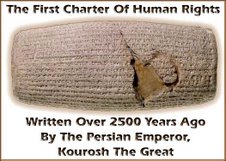Picasso would like Persepolis
By Mehr “Jay” Shahidi , TC Daily Planet
February 19, 2008
Minutes after I walked out of the theater after watching the new movie “Persepolis,” I remembered “Guernica,” Pablo Picasso’s masterpiece depicting chaos and horror of warfare. Not that Persepolis is about the same subject, but because both are superb forms of artistic expression demonstrating, explaining and dissecting the most inner chambers of human psyche in times of fear and disaster.
Opinion: Picasso would like PersepolisOf course Persepolis is much easier to begin to comprehend than Guernica. It is a motion picture with sound, music and verbal description. Yet, just like Guernica, it is a deeply moving story of human resiliency and the ultimate triumph of hope despite utmost adversity. It is serious. It is clean. It is also funny, touching and transcending. It is for the family. It is beautiful.
Persepolis is based on a cartoon story written for children. But it is magical in its appeal to our intellectual capacity. It narrates and weaves the simple as well as complex realities of our lives with our questions, dreams and wishes regardless of age. It is the story of any child growing up in a world of clear danger filled with clashing lifestyles and contradicting ideologies. It is also a world of possibilities, adventure, alternatives, beauty, kindness and hope.
Written by an Iranian immigrant to France, Persepolis is the autobiographical life story of the author, Marjane Satrapi, a truly artistic and visionary woman with rare courage. Her ability to take extremely intense and confusing subjects such as Marxism, Leninism, dictatorship, democracy, theocracy, freedom, rebellion, materialism, sex, love, drugs, cultural differences and more, and accommodate them inside a short book of diagrams and a two-hour animated movie, is indeed ingenious.
Persepolis is about a little girl born shortly before the 1979 revolution in Tehran, Iran. Her family is educated, secular and middle -class even though they are descendants of the previous and overthrown royalty of Persia. She is bright, inquisitive and charming. Her curiosity is limitless. For a few years she witnesses the civil upheaval against the last king of Iran (Persia) while her own family members and friends struggle with their political leanings and views under the iron hand of a dictatorship. She lives through the terror and uncertainty of the revolutionary period. And, she becomes of age when she is sent to live in Austria and France as a way to protect her from the dangers and excesses of the post revolutionary Iran.
The setting is Iran but the story of this little child traveling through the trials and tribulations of life in the process of becoming an adult in very universal. Her life is the saga of all those born under political oppression who grow up thirsty for freedom. It is the plight of refugees. It tells of the pain of millions who are compelled to abandon their homeland in order to seek solace elsewhere. It demonstrates the torturous lives of all who feel as second-class citizens. Country-less, demoralized and marginalized. The grass is not always greener on the neighbor’s lot. Marjane realizes that life in the so-called democratic nations have their excesses too. Alienation, substance abuse, promiscuity, crime, dishonesty, greed, lack of loyalty, transitory relationships and disintegrated families plague Western societies. The youth in modern cities also are confused.
Film director, Vincent Paronnaud has used his cinematic talents to assist Satrapi in the production of this elegant French movie. It is indeed a work of literature in cartoon form. If Persepolis was not an animated picture, it would lose its universal appeal. The background is Tehran. But, it is also the larger world. The faces are generic. The landscape is global. And, the production is meticulously cosmopolitan.
Persepolis is the story of all of us.

No comments:
Post a Comment